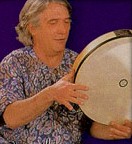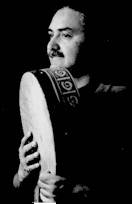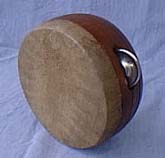Frame Drumming Main Page | Rhythmweb HOME |
|
|
|
 |
Frame drums are among the oldest and most versatile of drums. Most cultures have some type of frame drum; the Egyptian Riq, the Brazilian pandeiro, the kanjira from south India, the middle eastern tar and bendir ,and the native American versions are but a few of the available frame drums. Of course, the frame drum most Westerners are familiar with is the good old tamborine. |
| Not all frame drums are round. In Ghana, for example, there's a square frame drum called a tamalin, used in playing certain types of Ashante and Ewe music. square and rectangular frame drums are also found in China and other parts of the far east. The Tamelin player at right is abstracted from a photo in West African Rhythms for Drumset, by Royal Hartigan with Abraham Adzenyah and Freeman Donkor. |  |
| Some frame drums
have jingles, others do not. A variety of playing techniques can be used, based on
different styles from various cultures. For a glimpse of what can be acheived with a frame
drum, see instructional videos by Glen Velez or
John Bergamo
These two guys are tremendous talents and largely responsible for the popularization of the frame drum in the US. Accordingly, I speak of the two main schools of American frame drumming as the Velez school and the Bergamo school. Frame drums are best solo or in smaller groups as they aere easily drowned out by a herd (school? pack? bevy?) of djembe and djun djun players.:-)
Please e-mail us with any frame drumming links.... |
|




